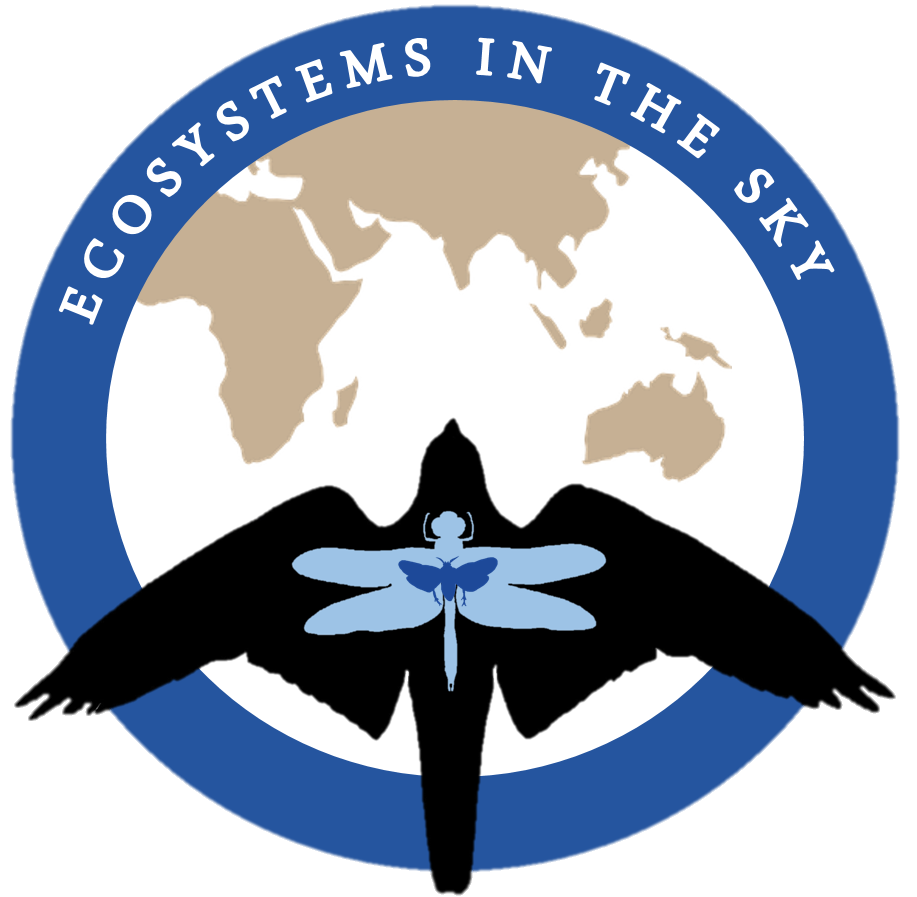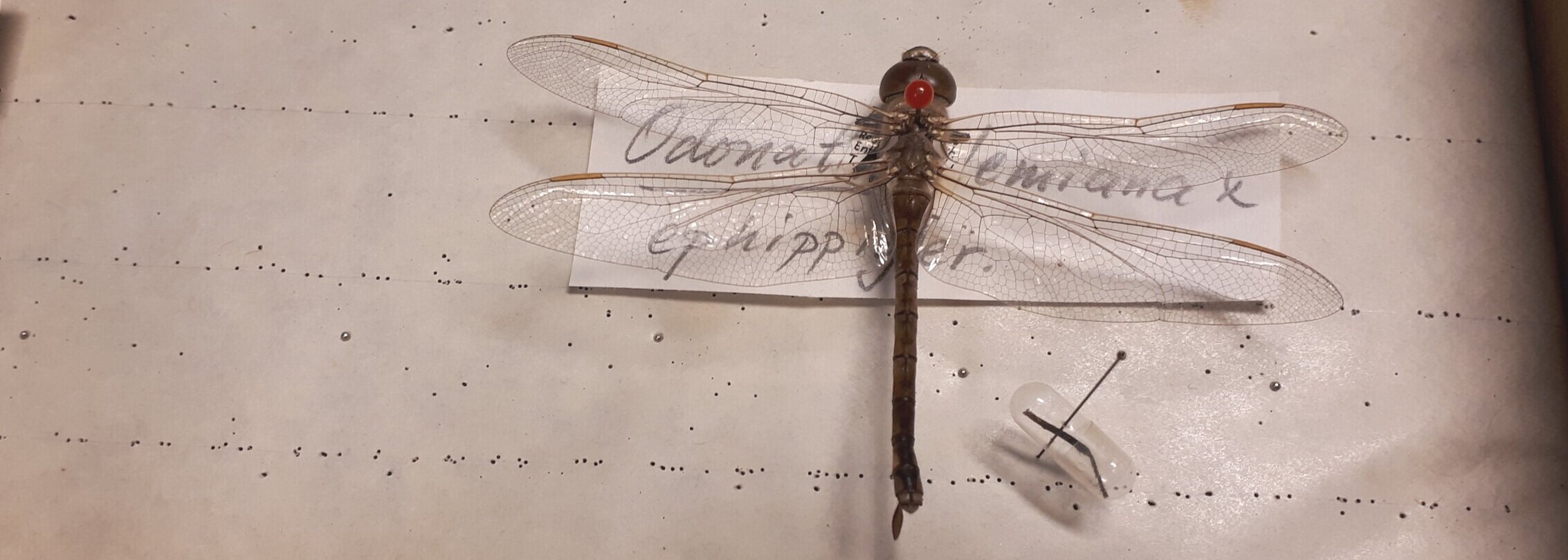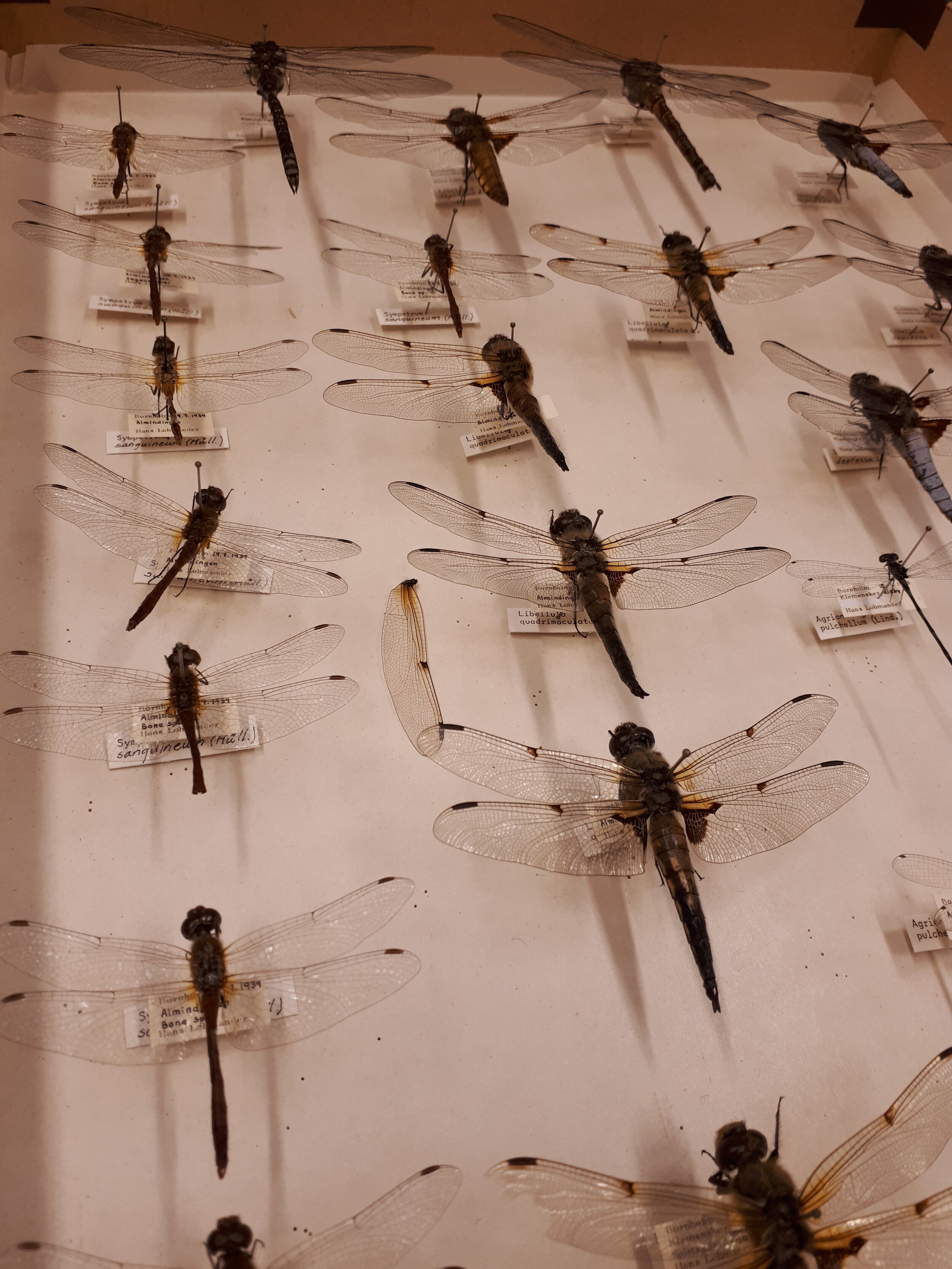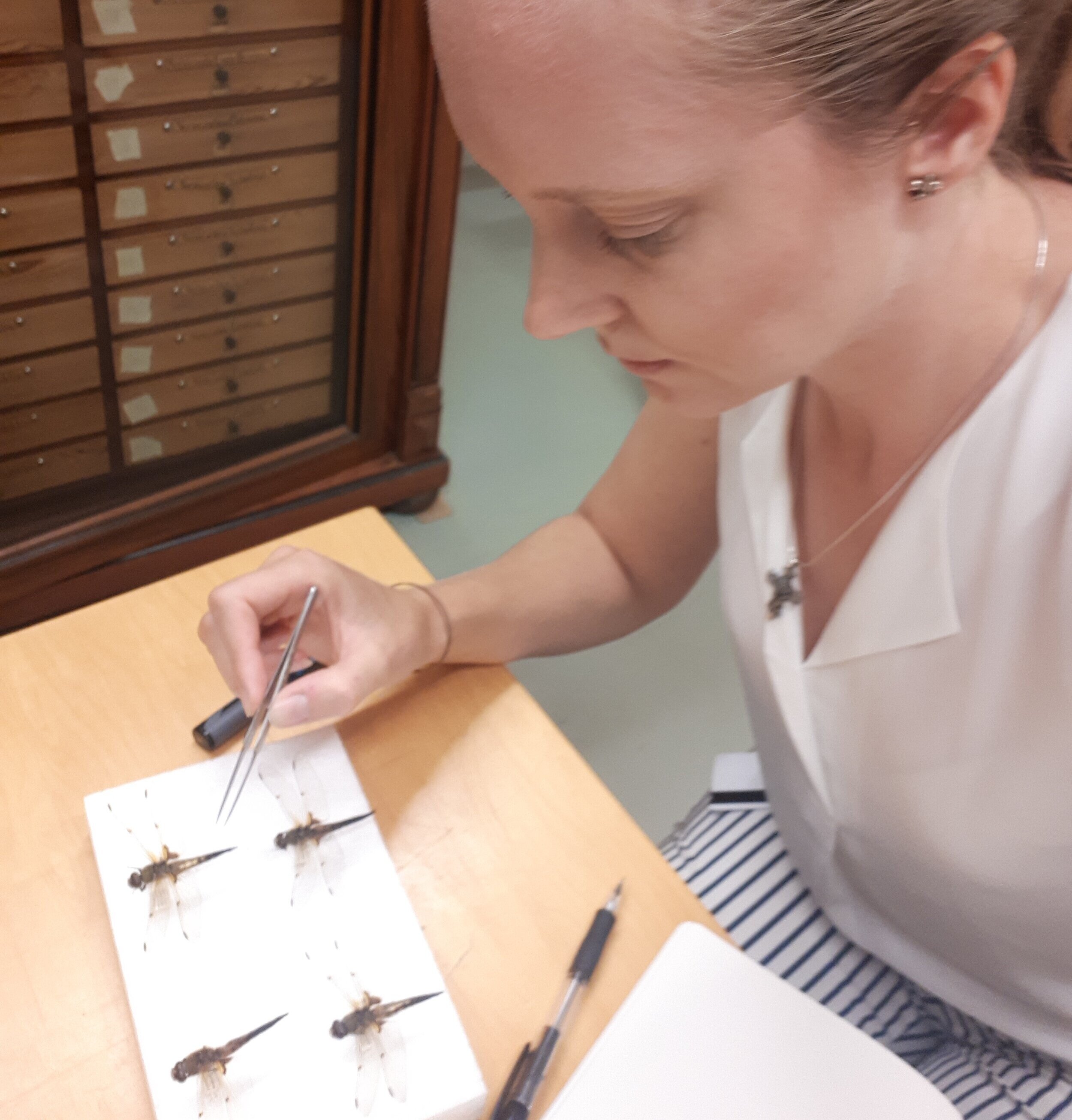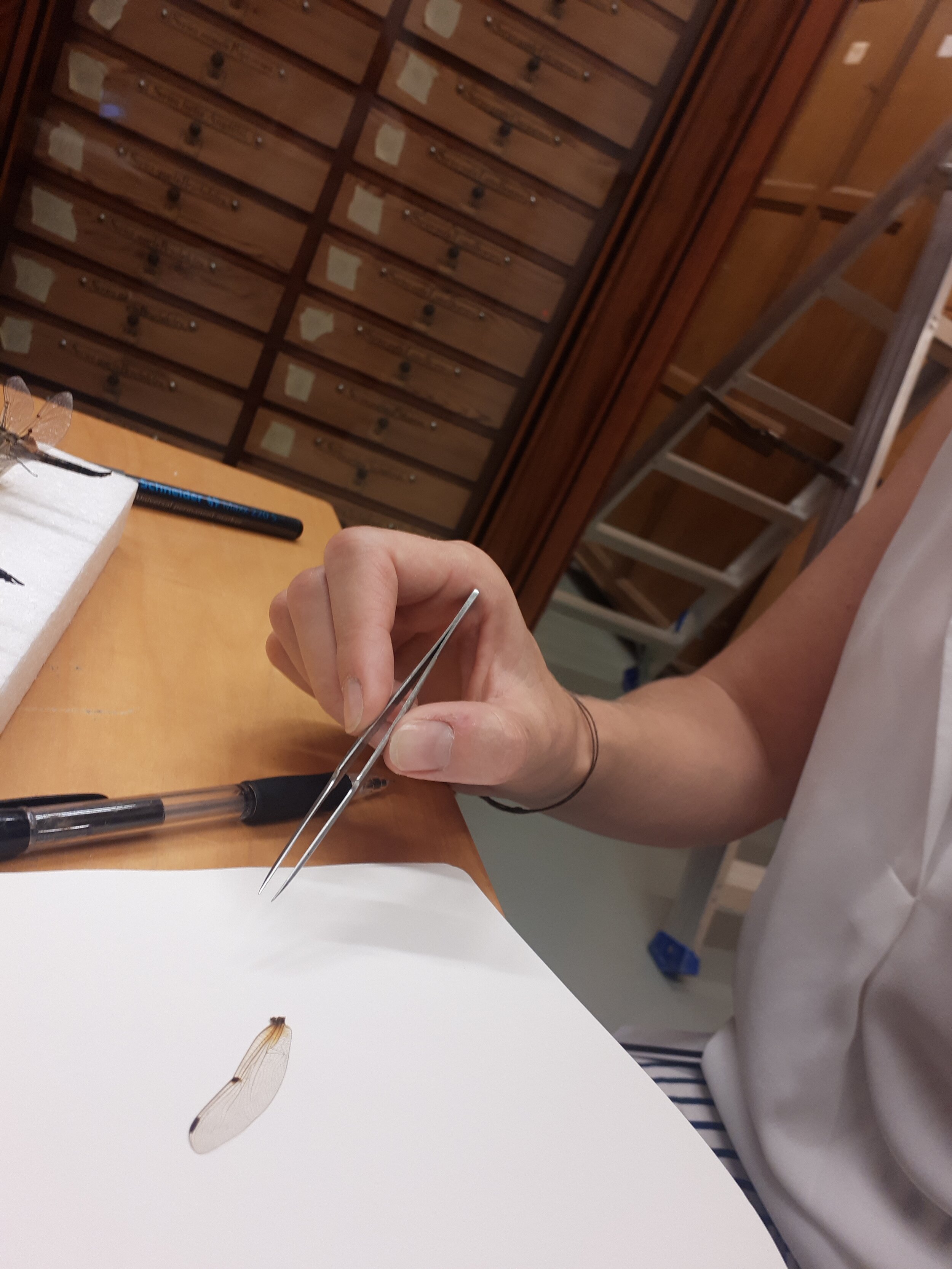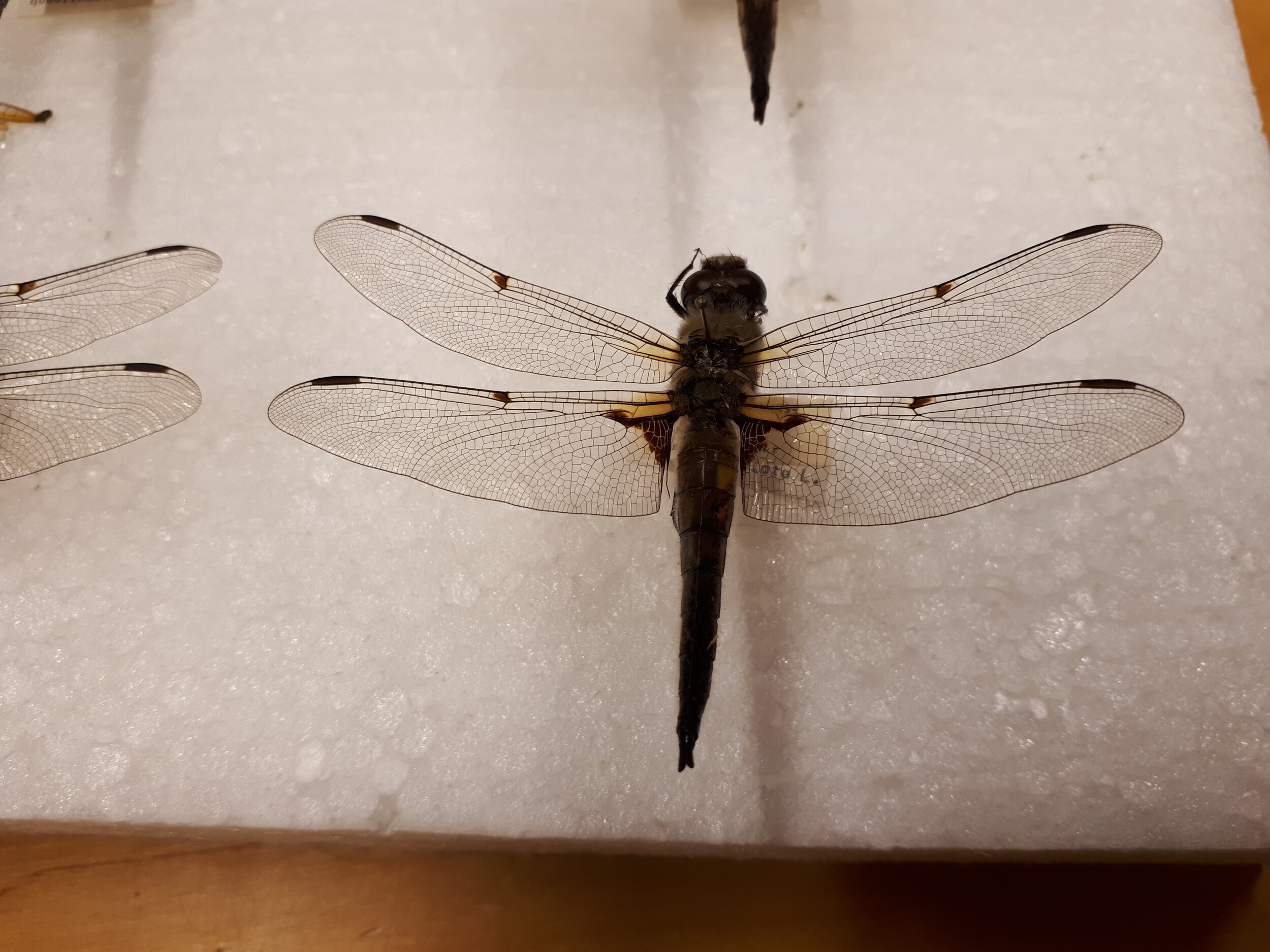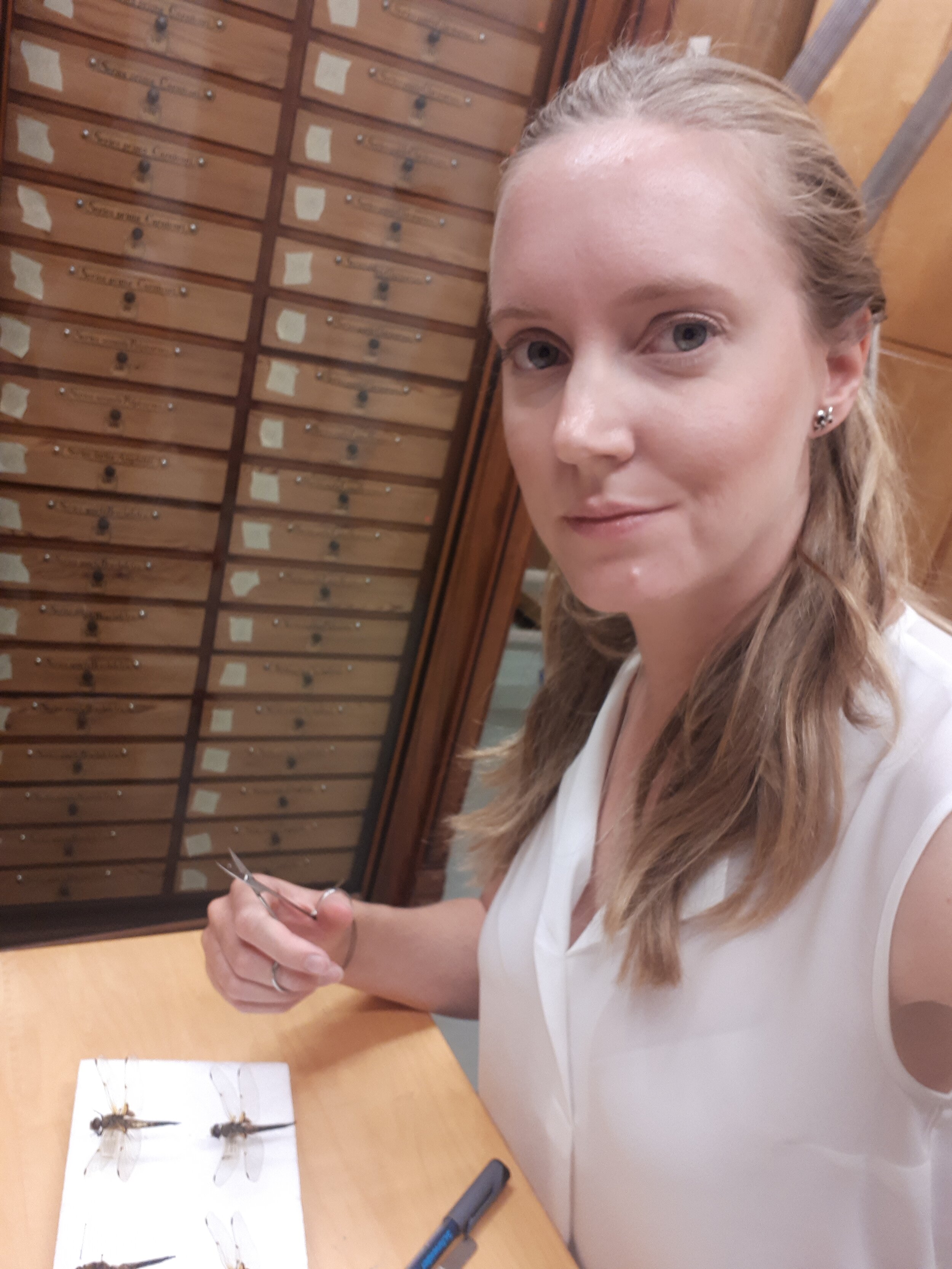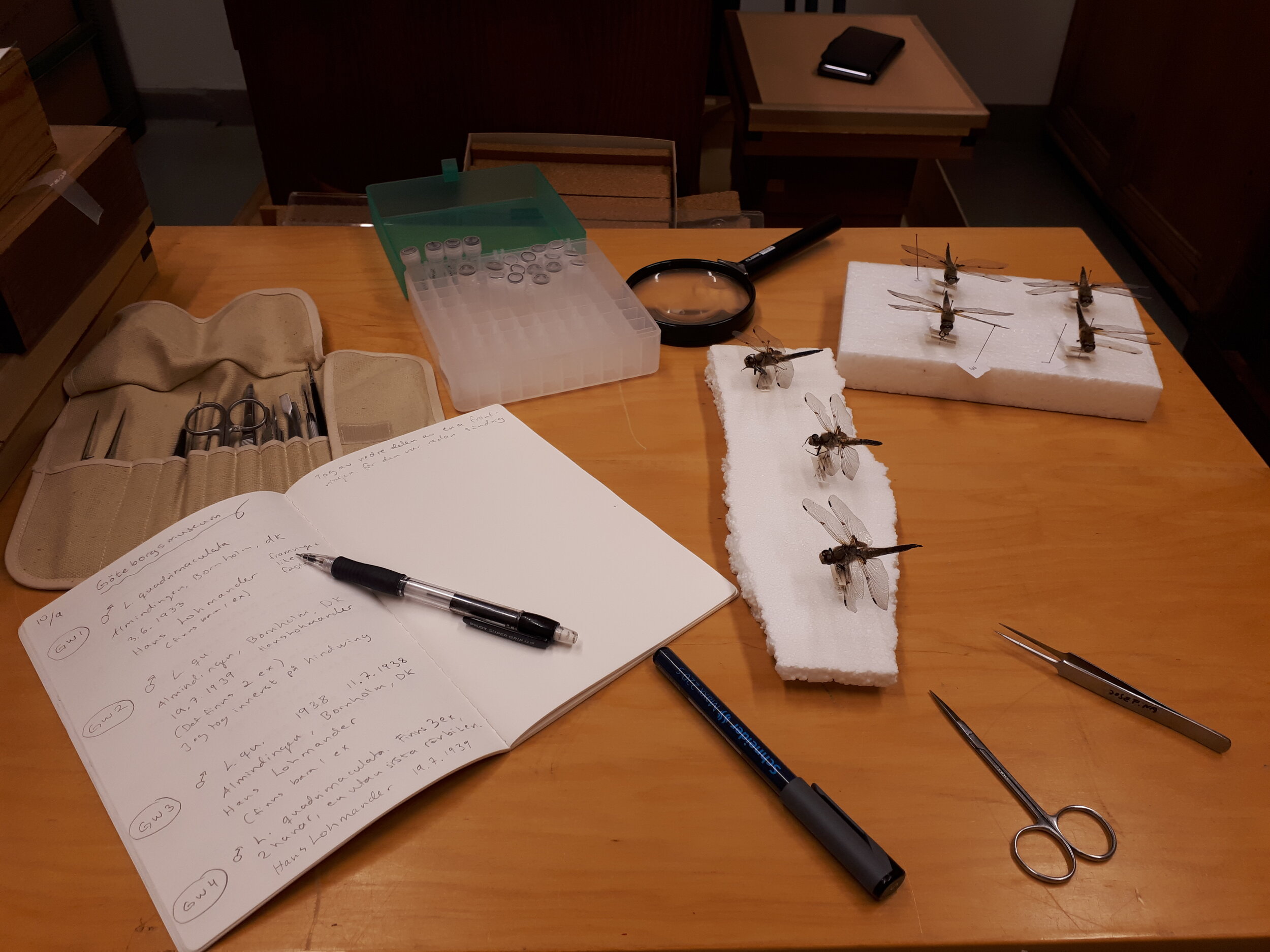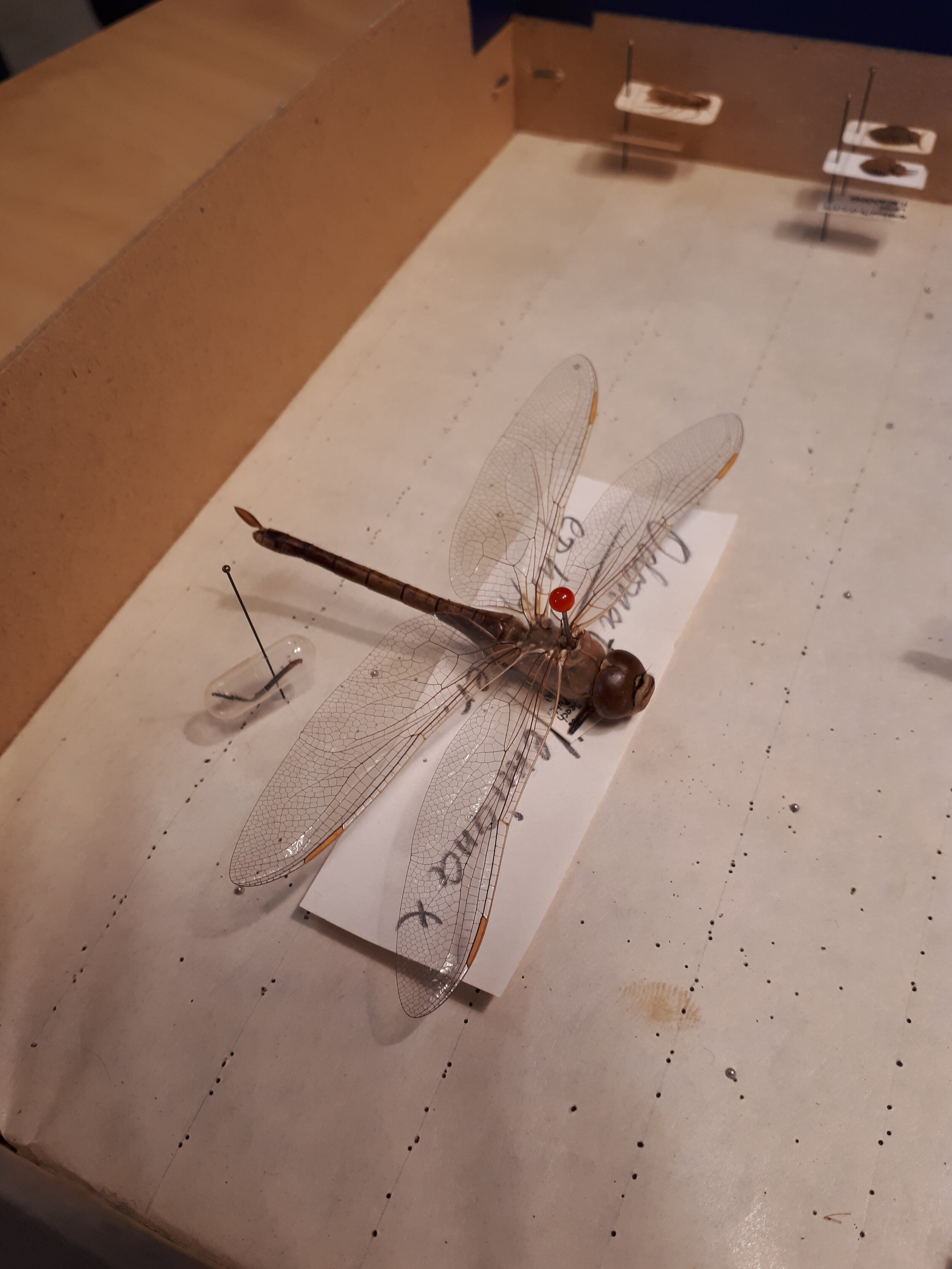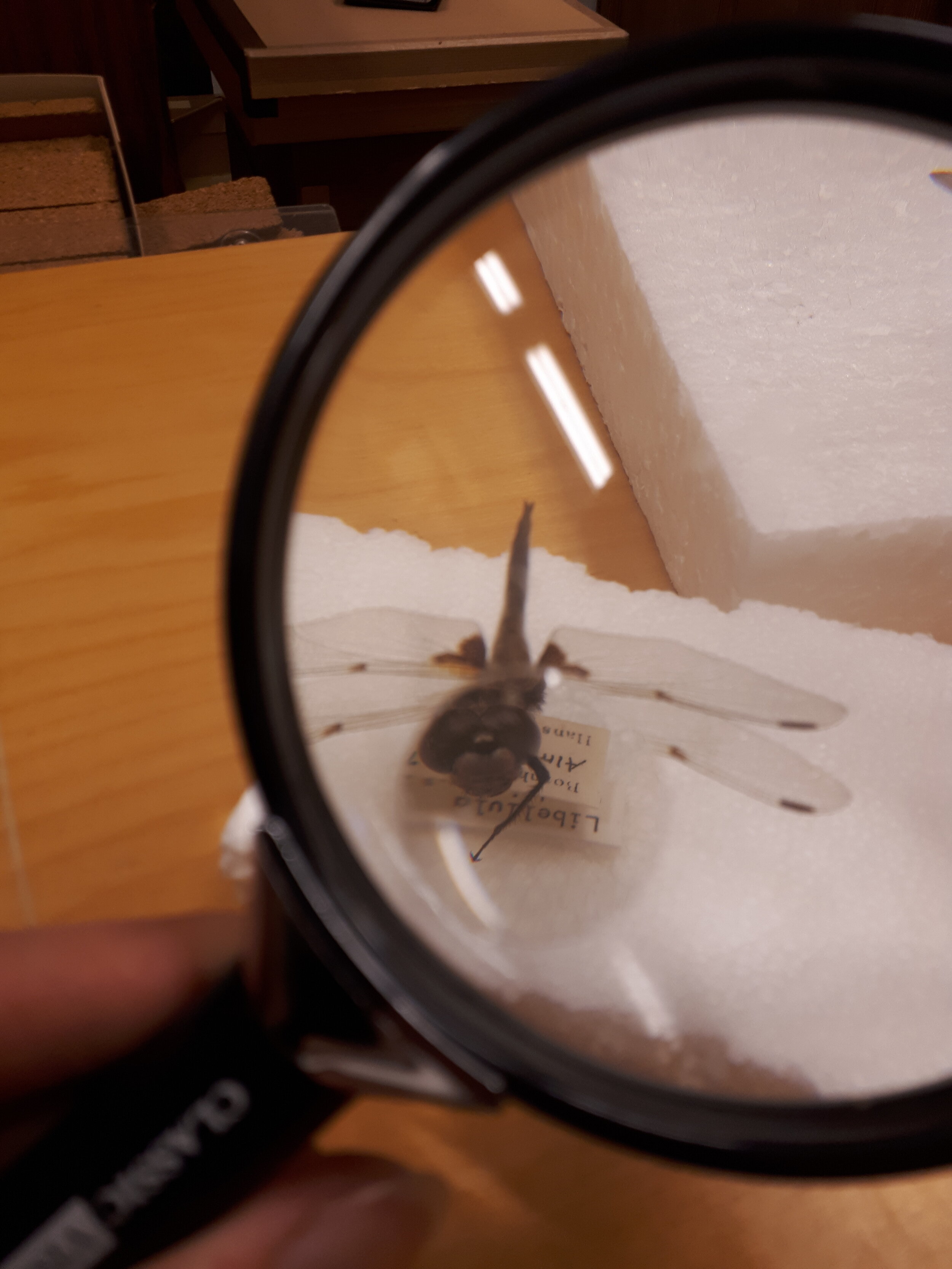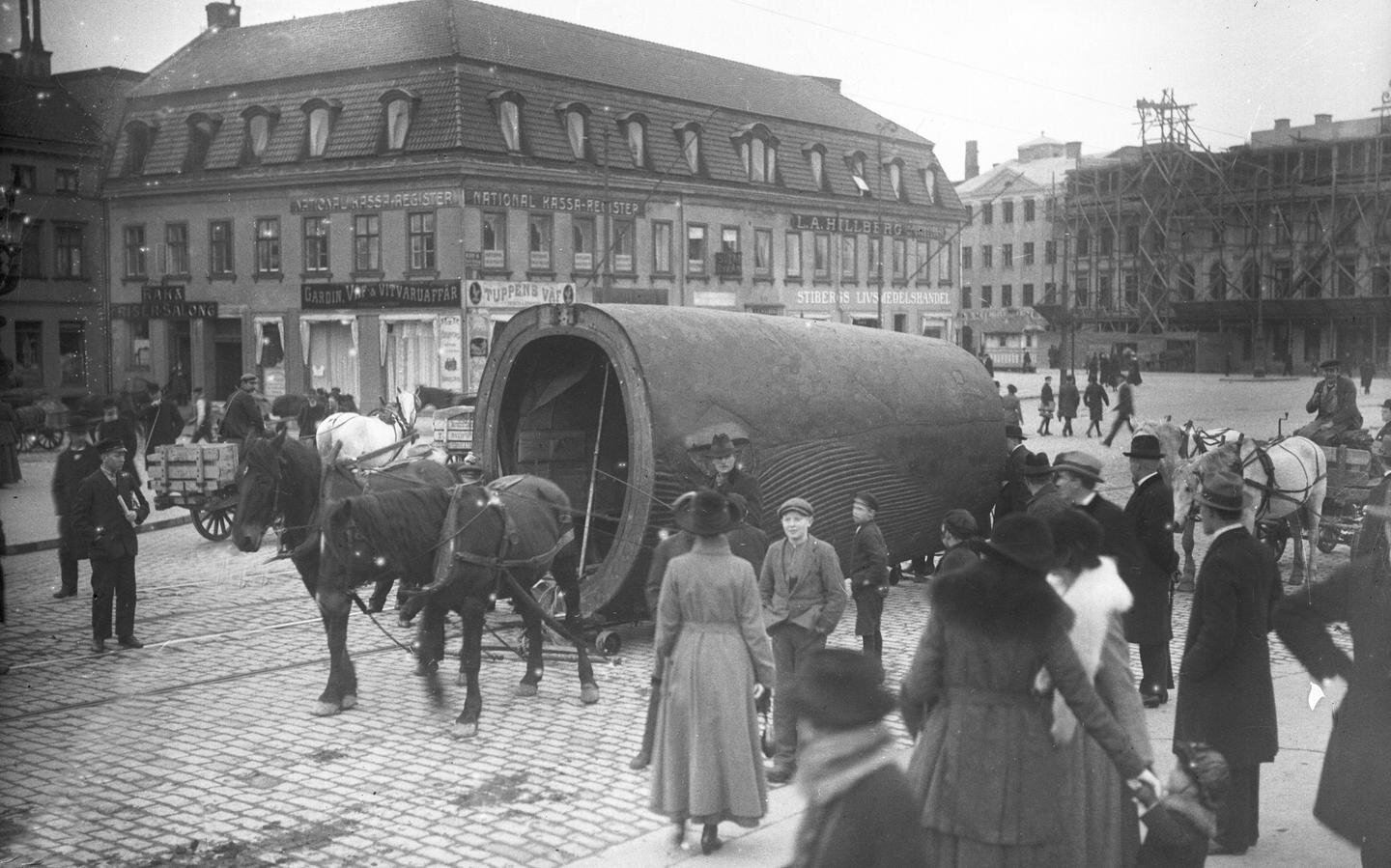Göteborg's Natural History Museum dragonfly collection
The vagrant emperor, caught in 1986 in Eliat, Isreal. Photo: Johanna Hedlund
In May 2019 I was reading an article from 1988, published in the Journal of the Swedish Entomological Society. In the article, the author described how he in 1986 had witnessed an enormous swarm of vagrant emperor dragonflies (Hemianax ephippiher) passing through Eilat in Isreael. He ended his account by revealing that he caught one specimen from the swarm, a female, and that this specimen now resided in the collection of the Natural History Museum in Guthenburg.
So I wrote to the conservator and asked if it would be possible for me to take a sample of the speciemen, and any other collected, migratory dragonfly species they had.
The curator, Charlotte, was very nice and invited me to see the collections and take a few samples, as long as I only took very little and not from all of the specimens.
The vagrant emperor that I was interested in, was had been mounted using a common sewing pin. Usually, insects are mounted with special, entomological pins that are much finer, thinner and sharper, which reduced the risk of damage.
I do not know if it was the thicker pin that had damaged the specimen, but it has lost one of its legs (on the picture above you can see it in a little gelatin tube next to the dragonfly). As the leg had already come loos, I could take it for my analysis.
Along with the vagrant emperor, I also collected samples from four-spotted chasers collected on Bornholm, Denmark, in the 1930s!
The newest part of the Natural History Museum in Gutheburg.
Photo: Johanna Hedlund
Drawings of the vagrant emperor, included in the 1988 article.
Artist: Tomas Cedhagen
The museum and the whale
Guthenburg, or Göteborg as it is spelled in Swedish, is the second largest city in Sweden and is located on the west coast. The city’s Natural History Museum is an old brick building, with a castle-like tower, built on top of a hill overlooking the large green park of Slottsskogen.
The museum was opened in 1923 and the architecture is typical of the time: revived renaissance, or “vasastil” (Vasa style), named after the Swedish king Gustaf Vasa who ruled in the beginning of the 1500s.
Göteorgs Naturhistoriska museum, 1923
One of the more peculiar things that can be found in the museum’s collections is Malmska valen, in English: the Malm whale.
Malmska valen’s history begins in 1986 when two fishermen found a giant, stranded “whalefish” in the archipelago southwest of Gutenberg, Sweden. The fishermen approached the dying animal, and stabbed it through its eye. But the whale prevailed, even after the fishermen returned with axes and scythe, stabbing and slashing at it. Eventually though, the whale perished due to blood loss.
People flocked to see the giant beast, and the curator, of Zoology at the Natural History Museum of Gutheburg August Wilhelm Malm, ordered the first measurements to be taken.
The whale was 16 meters long.
The Scot-Swede industrialist and philanthropist James Dickson bought the whale, and donated it to the museum. The excitement was great, as at first, it was believed that the whale was a new species. Malm gave it the name Balaenoptera carolinae, after his wife Carolina. But it was realised later on that the whale in fact was a young, male blue whale.
The whale was transported into Guthenberg, accompanied by 100 boats. By charging visitors to see the whale and to experience barbecued whale meat, money was raised to preserve it. A wooden frame was built to mount the whale’s skin, but proved too big. The skin had to be left open underneath, and this gap can still be seen today.
A small room was created inside the whale, with some benches and hand-printed tapestries. The entrance was through the whales big mouth. Allegedly, the room was sometimes used as a tea salon, but this has never been confirmed.
Today, the Malm whale can only be viewed on special occasions, like during the museum Christmas market and during election day (“valdagen” in Swedish, a play on words, as val means both whale and election in Swedish)
The Malm whale and its skeleton
